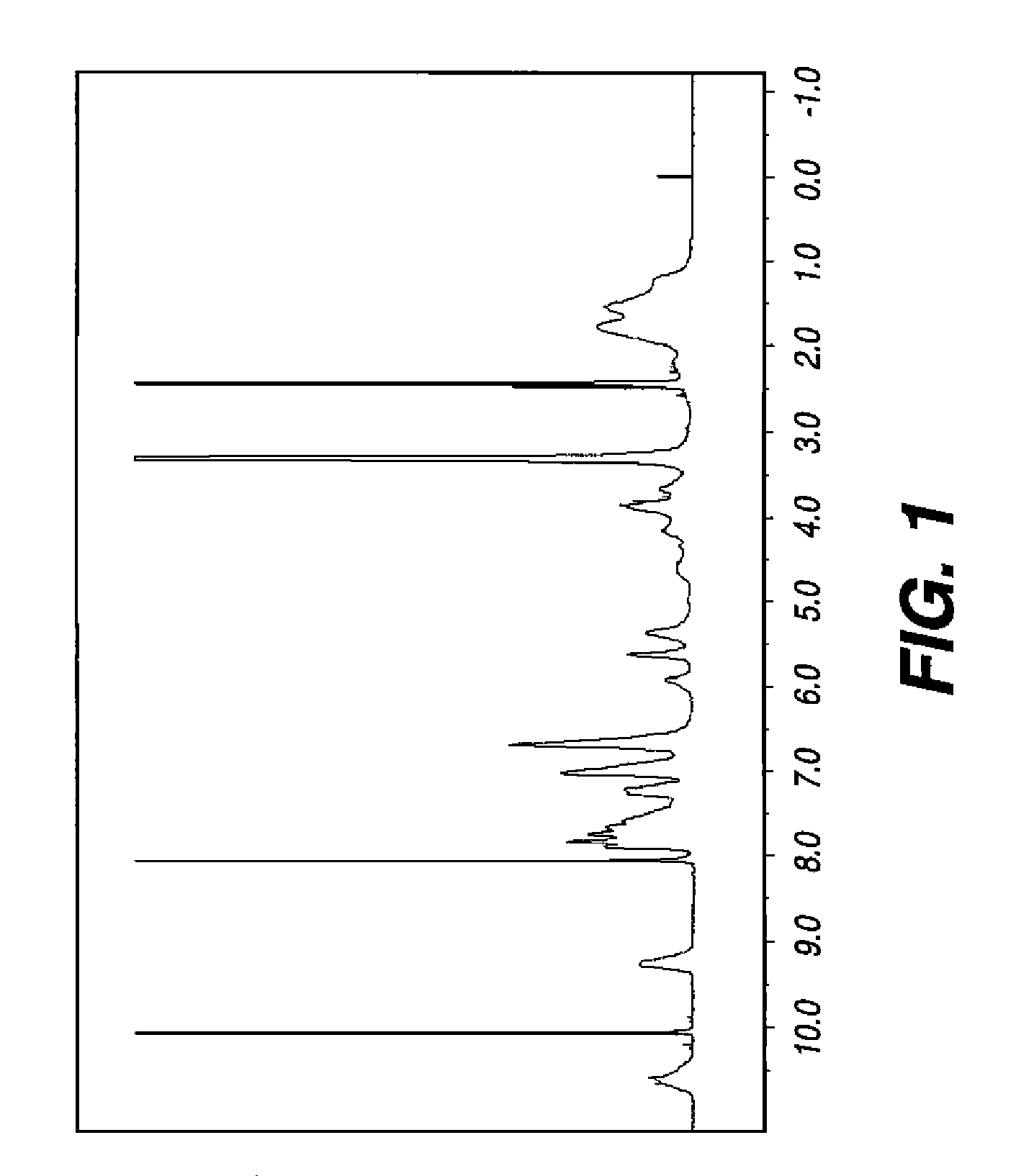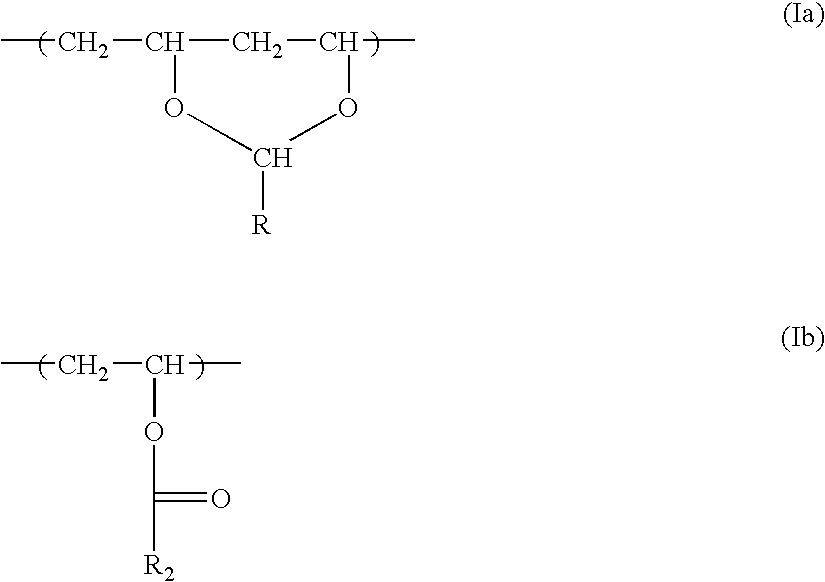Positive-working radiation-sensitive imageable elements
a radiation-sensitive, imageable element technology, applied in the direction of lithography, photosensitive materials, instruments, etc., can solve the problem that other properties cannot always be improved, and achieve the effect of improving imaging sensitivity, high image resolution, and improving sensitivity
- Summary
- Abstract
- Description
- Claims
- Application Information
AI Technical Summary
Benefits of technology
Problems solved by technology
Method used
Image
Examples
invention example 1
[0209]An imageable element of the present invention was prepared in the following manner. A radiation-sensitive composition was prepared using the following components:
Polymer A9.02gLB9900 (49% in PM)0.136gMalachite green oxalate0.024gS 0094 IR Dye0.030gSudan Black B0.024gDHBA:Salicylsalicylic acid (1:1 weight ratio)0.196gPolyfox ® PF 652 (10% in PM)0.036BLO3.00gMEK4.50gPM7.32g
[0210]This composition was filtered and applied to an electrochemically roughened and anodized aluminum substrate that had been subjected to a treatment using an aqueous solution of sodium phosphate and sodium fluoride by means of common methods and the resulting imageable layer coating is dried for 30 seconds at 130° C. in Glunz&Jensen “Unigraph Quartz” oven. The dry coating weight of the imageable layer was about 1.5 g / m2.
[0211]The resulting imageable element was conditioned with interleaving paper for 48 hours at 60° C. and 30% RH. It was then exposed on a Kodak® Lotem 400 Quantum imager in a range of energ...
invention example 2
[0212]Another imageable element of the present invention was prepared using the radiation-sensitive composition having the following components and following the procedure of Invention Example 1:
Polymer B0.902 gLB9900 (49% in PM)0.290 gCrystal Violet0.019 gS 0094 IR Dye0.030 gMalachite green oxalate0.009 gDHBA0.192 gSudan Black B0.024 gPolyfox ® PF 652 (10% in PM)0.036 gMEK 4.54 gPM 5.11 gBLO 3.64 gDioxalane 4.54 g
[0213]The results that were obtained using this imageable element are shown below in TABLES I and II.
invention example 3
[0214]Another imageable element of the present invention was prepared using the radiation-sensitive composition having the following components and following the procedure of Invention Example 1:
Polymer C0.848 gLB9900 (49% in PM)0.193 gInfrared Dye S00940.030 gCrystal Violet0.024 gSudan Black B0.024 gDHBA0.167 gPolyfox ® PF 652 (10% in PM)0.036 gMEK 3.85 gPM 4.38 gBLO 3.08 gDioxalane 3.85 g
[0215]The results that were obtained using this imageable element are shown below in TABLES I and II.
PUM
| Property | Measurement | Unit |
|---|---|---|
| mol % | aaaaa | aaaaa |
| mol % | aaaaa | aaaaa |
| mol % | aaaaa | aaaaa |
Abstract
Description
Claims
Application Information
 Login to View More
Login to View More - R&D
- Intellectual Property
- Life Sciences
- Materials
- Tech Scout
- Unparalleled Data Quality
- Higher Quality Content
- 60% Fewer Hallucinations
Browse by: Latest US Patents, China's latest patents, Technical Efficacy Thesaurus, Application Domain, Technology Topic, Popular Technical Reports.
© 2025 PatSnap. All rights reserved.Legal|Privacy policy|Modern Slavery Act Transparency Statement|Sitemap|About US| Contact US: help@patsnap.com



